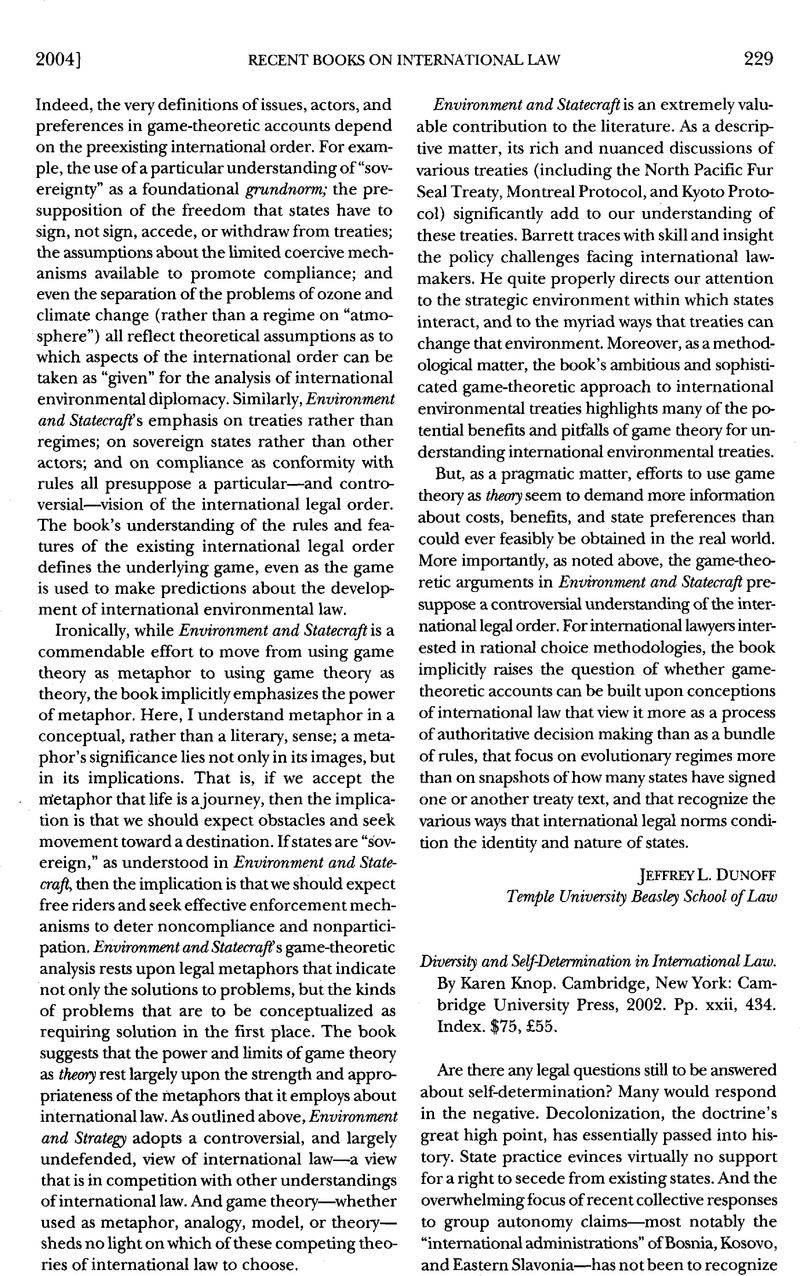No CrossRef data available.
Published online by Cambridge University Press: 27 February 2017

1 See Thomas, M. Franck, Post-modem Tribalism and the Right to Secession, in Peoples and Minorities in International Law 3 (Brolmann, Catherine, Lefeber, Rene, & Zieck, Marjoleine eds., 1993)Google Scholar; Thomas, M. Franck, The Emerging Right to Democratic Governance, 86 AJIL 46 (1992).Google Scholar
2 Higgins, Rosalyn, Problems and Process: International Law and How We Use It (1994).Google Scholar
3 1975 ICJ Rep. 12 (Oct. 16).
4 Oct. 19, 1981, 91 ILR 543.
5 Conference on Yugoslavia, Arbitration Comm’n Op. No. 2 (1992), reprinted in 31 ILM 1497 (1992).
6 1995 ICJ Rep. 90 (June 30).
7 No. 169, June 27, 1989.
8 UN Doc. E/CN.4/SUB.2/1994/2/Add.l (1994).
9 In regard to the Draft Declaration, for example, Knop writes that the “issue of secession to be resolved in die declaration on the rights of indigenous peoples was whether to recognize a right to secede and if so, on what basis” (p. 262). And in contrasting two possible readings of the approach of the chair of the Indigenous Peoples Working Group, Knop identifies as a “difficulty” the fact that one reading “seems to justify a more limited right of secession” than the other (p. 273).
10 This practice is exhaustively reviewed by Crawford, James in State Practice and International Law in Relation to Secession, 69 Brit. Y.B. Int’l L. 85 (1999).Google Scholar
11 Organization of African Unity, Border Disputes Among African States, July 21, 1964, OAU Doc. AHG/Res. 16(1), reprinted in Basic Documents on African Affairs 360, 361 (Ian Brownlie ed., 1971).
12 Sovereignty over Pulau Ligitan and Pulau Sipadan (Indonesia/Malaysia), Application of the Philippines for Permission to Intervene, Sep. Op. Franck, J. ad hoc, para. 15 (Int’l Ct. Justice Oct. 23, 2001).